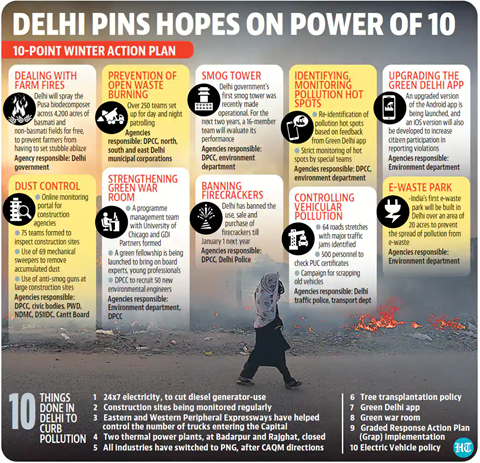Friday, 8th October 2021
Hydrogen Production Using Sustainable Sources
In News
Indian scientists have developed a large-scale reactor that produces a substantial amount of hydrogen using sustainable sources like sunlight and water, in a cost-effective and sustainable process.
About the news
- The Team at the Institute of Nano Science and Technology (INST) have developed a prototype reactor that operates under natural sunlight to produce hydrogen at a larger scale.
- This is for the first time that hydrogen has been produced in a cost-effective process at a large scale. They have used an earth-abundant chemical called carbon nitrides as a catalyst for the purpose.
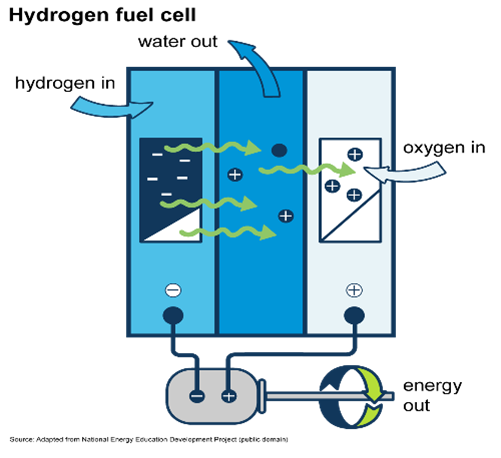
- It is supported by the DST Nano Mission NATDP project, and the team is in the process of obtaining a patent for the technology.
- The team is in the process of optimising the hydrogen production with effective sunlight hours in addition to the purity of the hydrogen, moisture traps, and gas separation membranes so as to hyphenate with the fuel cells.
The Process.
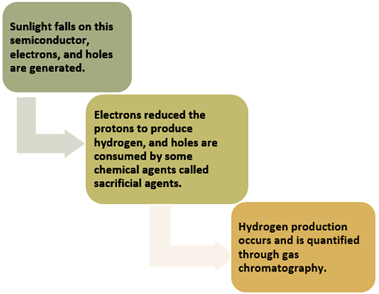
Significance
Hydrogen generated in this manner can be used for:
- Electricity generation through fuel cells in remote tribal areas.
- Hydrogen stoves, and powering small gadgets.
- Eventually, they can power the transformers and e-vehicles, which are long-term research goals under progress.
- India has set a target of 450 GW of renewable energy by 2030. One of the most economical ways to achieve this is to produce hydrogen at a large scale through photocatalytic water splitting.
Sources:
- Indian scientists develops a large scale reactor for hydrogen production (thestatesman.com)
- Indian Researchers Develop Large-Scale Reactor to Produce Hydrogen Using Sustainable Sources | The Weather Channel - Articles from The Weather Channel | weather.com
UNESCO report on India’s Schools
In News
UNESCO launches 2021 State of the Education Report for India: No Teacher, No Class.
About the News
- This publication is the annual flagship report of UNESCO New Delhi and highlights the role played by the teachers and quality teaching in ensuring meaningful education and resilient education system.
- The theme of the third edition of the report focusses on teachers, teaching and teacher education.
Findings of the report
- Seats vacant: A total of 19 % teaching positions in schools lie vacant in the country, 69 % of them are in rural areas.
- Three states with over one lakh vacancies are Uttar Pradesh (3.3 lakh), Bihar (2.2 lakh) and West Bengal (1.1 lakh).
- Gross enrolment ratio: While the gross enrolment ratio (GER) for elementary schools has increased from 81.6 in 2001 to 93.03 in 2018-19 and stands at 102.1 in 2019-2020.
- GER is the number of students enrolled in a given level of education, regardless of age, expressed as a percentage of the official school-age population.

- Pupil teacher ratio: The ratio is adverse in secondary schools with no availability of special education, music, arts and physical education.
- Lack of digital infrastructure-
- The overall availability of computing devices (desktops or laptops) in school is 22 per cent for all India.
- The availability is even lower in rural areas (18 percent).
- Access to the internet in schools is 19 per cent all over India with only 14 per cent in rural areas compared to 42 per cent in urban areas.
- Single teacher school: A total of 7.15 percent single teacher schools are in Madhya Pradesh having the highest (21,077).
- Under-qualification: 7 % pre-primary, 4.6% primary and 3.3% upper primary teachers are unqualified.
- Variation: Women account for about 50 % of the workforce, but intestate and urban rural variation exists.
Sources:
Global Aviation Sector
In News: The International Air Transport Association (IATA) has reported that the global airline industry is expected to incur a loss of $201 billion during 2020-22.
Key Observations by the IATA
- Net Industry Loss: The Net industry losses are expected to reduce to $11 .6 billion in 2022 after a $51.8 billion loss in 2021.
- Passenger Numbers: The passenger numbers are expected to reach 2.3 billion in 2021 which will grow to 3.4 billion in 2022 similar to 2014 levels but significantly below the 4.5 billion travelers in 2019.
- Demand for Air Cargo: The robust demand for air cargo in 2021 stands at 7.9% above 2019 levels and is expected to be 13.2% in 2022.
- Domestic Demand: Domestic demand is expected to reach 73% in 2021 and 93% in 2022 of the pre-crisis (2019) levels.
- Cost Fluctuation: Airlines have achieved aggressive cost reductions by reducing their overall expenses by 34% in 2021 compared to 2019 and the costs will rise in 2022 and will be only 15% lower compared with pre-crisis levels with expanded operations and higher fuel prices.
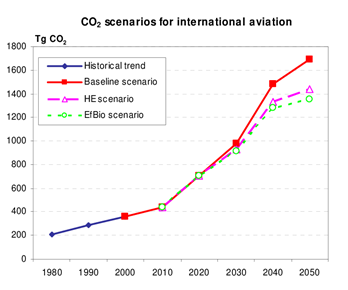
Resolution to achieve Net-Zero Carbon Emissions by 2050
- In Alignment with the Paris Deal: This resolution will align with the Paris Agreement goal for global warming not to exceed 1.5°C.
- Carbon Abatement: At least 1.8 gigatons of carbon must be abated in 2021 to be able to serve the needs of the 10 billion people expected to fly in 2050 and a cumulative total of 21.2 gigatons of carbon will be abated between 2021 and 2050.
- Carbon Abatement strategies: Sustainable aviation fuels (can abate 65% of 1.8 gigatons), new aircraft/propulsion technology (13%), more efficient operations and infrastructure (3%), carbon capture and storage (11%), offsets (8%), development of new zero-emissions energy sources such as electric and hydrogen power are possible solution for carbon abatement.
- Removal of all man-made GHGs: Net zero emission envisions removal of all human-made greenhouse gas emissions from the atmosphere through reduction measures.
- Collective Efforts: Stabilizing emissions to emissions reductions requires a collective effort and the governments must each individually take responsibility to address the environmental impact of their policies, products, and activities.
Sources:
- Global airline industry to report loss of $201 billion during 2020-22: IATA
- IATA unveils 2050 climate action plan
- IATA approves resolution for global aviation industry to achieve net-zero carbon emissions by 2050
Image Source:
Global Energy Crisis
In News
As the supply of natural gas, coal and other energy sources fails to adequately satisfy demand, many countries are facing an energy crunch.
About the News
- Natural gas prices have risen multifold in Europe this year while several factories in China have shut down due to power disruptions linked to the short supply of coal.
- The U.K., meanwhile, has witnessed many of its fuel pumps running dry and the country’s military has been called in to prevent any violence.
- India’s power plants are also running on critically low coal stocks.
What are the Immediate Causes of the Current Crisis?
- Demand Rebound: The rise can be attributed to the bounce back witnessed in consumer demand as economic activity returns to normal after the pandemic. Production, however, has failed to bounce back as quickly due to disruptions to the supply chain caused by the pandemic.
- Greenflation: The rise in energy prices can also be seen as an example of ‘greenflation’ caused by increasing restrictions placed by governments on traditional energy sources.
- Unviable Renewable Energy Sources: A fall in generation from other sources has also affected the availability of electricity. Lower production from hydropower plants in the southern regions of China and a decline in output of wind turbines in Europe exacerbated the energy crisis.
- Coal Output Disruption: Globally, the output of coal mining was affected by heavy rains in countries such as Indonesia and Colombia. Elsewhere, labour shortages caused by the pandemic affected production.
Was Global Energy Crisis an impending issue?
- Depleting Resources: Currently, fossil fuels contribute to 80% of our energy needs. The supply chains are so severely depleted, the system cannot accommodate any type of disruption. Energy prices are expected to remain high and to go even higher.
- Access to Energy: The majority of the world’s energy reserves is concentrated in a few regions. Oil reserves are located mostly in Africa, the Caspian Basin, and the Persian Gulf. Around half of the world’s gas reserves are located in Iran, Qatar, and Russia. The strained relationship between many of the nations/regions and high-energy-consuming nations makes future access a bit uncertain.
- Climate Change: A series of extreme weather events and unusual seasonal patterns have impacted both gas demand and supply. Extreme Winter and Summer temperatures have boosted demand for gas for electricity.
- High Interdependence: Everyday goods and services are dependent on a complex, international logistics system that has little room for error, with companies prioritizing costs over diversification.
- Climate Change Policy: Climate policy itself is pushing up energy prices. Carbon allowance prices are reaching record levels, driven by climate reforms. Policies to address climate change may lead to carbon price volatility, which, in turn, could feed energy price volatility.
- Pace of Energy Transition: Uncertainty about the pace of transition may lead to periodic shortfalls in supply if climate action shutters traditional fossil fuel infrastructure before alternatives can pick up the slack. And if fossil fuel supply is curbed faster than the pace at which fossil fuel demand falls, shortfalls can result in market crunches that cause prices to spike and exacerbate existing geopolitical risks.
What would be the Impact of the Crisis on the World?
- Sky-rocketing Energy Prices: The prices of natural gas, oil, coal and other energy sources have hit multi-year highs. The price of natural gas in Europe, for instance, has risen by over 400% since the beginning of the year while the price of electricity has risen by over 250%.
- Impact on Production: China’s factory output in September shrunk for the first time in 18 months, thus putting the brakes on the country’s recovery from the coronavirus pandemic, owing to power disruptions caused by inadequate coal supplies.
- Supply chain disruption: Since energy prices affect economic decisions across the supply chain, the rise in prices has had a significant impact on economies. The price of domestic natural gas in India, which was hiked by over 60% recently, too has risen in tandem with international prices. Thermal plants that run on imported coal have slashed imports due to rising prices
- Indian consumers are already paying more for their cooking gas delivered through pipelines and cylinders. Pump prices of petrol, diesel, and compressed natural gas have also been rising.
- Backlash against Renewables: Going forward, there could also be a backlash against renewable energy as more people realise the economic cost of achieving emission targets. With renewable energy sources such as wind and solar energy turning out to be unreliable especially during winters, countries may be forced to rely on traditional fossil fuels and governments may need to rethink their energy policy.
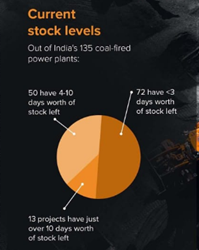

- Geo-political Impacts: The surge in oil prices amid changing global dynamics could add further complications to RBI’s reaction function. Power blackouts in more than 10 Chinese provinces are threatening global supply chains. European nations suspect Russia of manipulating natural gas prices by choking supplies delivered through pipelines to the continent.
- Impact on Economy: Higher oil prices and coal shortages risk fanning inflation and slowing economic growth, for instance in India, while punishing the nation’s currency and bonds.
- A lack of coal means factories could shut, while forcing India to import more fossil fuels at a time when crude prices at a seven-year high are already weighing on the energy hungry nation.
- The threat of inflation and worsening external deficit have led to a 12 basis-point surge in the nation’s benchmark bond yields over the past two weeks and a decline in the rupee.
- Impact on Cop26: The current energy crisis may impact the CoP26, which will take place at the end of this year. The crisis could change some serious decisions on Co2 reduction and renewable adoption targets.
What can be done to avert such a crisis in the future?
The Energy Transition: The complexity of the energy transition is a fundamental issue for society with implications for all sectors and dimensions of life. So, there is need to design and develop mechanisms that enable smooth transition from non-renewable to renewable energy.
- Even the new renewable energy systems need to be as efficient or even more efficient than the current non-renewable ones.
- Rethink Energy mindset: The energy system is interconnected and stretched. So, people should think differently about their relationship with energy, moving away from an abundance-of-energy mindset toward one that emphasises that it's a precious and constrained resource.
- New energy business models: From developing energy-efficient products to developing whole new fuel systems, like hydrogen and the infrastructure that goes with it, reconfiguring the global energy sector will require wide-reaching cooperation. Regulators and policymakers must act to de-risk the new commercial landscape to foster investment in new partnerships, new technologies and new services.
- Powering energy literacy: The top 10 of the World Economic Forum’s Energy Transition Index (ETI) countries account for around 2% of the world’s population and approximately 3% of energy-related CO2 emissions, according to the index.
- Larger, more populous – and more polluting – countries will need to make more progress if the overall picture is to improve. But attempts at moving too suddenly can cause unrest and resistance to change.
Conclusion: The term “global energy crisis” encompasses many issues that, particularly for those unfamiliar with them, should probably be discussed separately. Despite numerous fossil fuel reserves and renewable energy sources, the threat of running out of energy sources is very real. Political instability in regions with plentiful energy reserves makes future energy security uncertain. Reducing the effects of global warming puts a limit on our future fossil fuel consumption. In more ways than one, there is an impending energy crisis. While oil will continue to be an important energy source, we as a global community are justified in searching for other solutions.
Question: The current global energy crisis has been a long impending one. Discuss. What will the possible impacts of this crisis?
Sources:
- Explained | How bad is the world’s energy crisis?
- Explained | Why Europe and China are facing an energy crisis and how it affects India
- Deepening energy crisis in India raises inflation alarm as RBI meets
- Lessons for the energy transition from the 2021 energy crisis
- Is There an Impending Energy Crisis?
- Why This Energy Crisis Is Different
This Day in History - Indian Air Force Day
On October 8, 1932 the IAF was established. Every year this day is celebrated as the Indian Air Force Day. This year will celebrate the 89th anniversary of Indian Air Force Day. This day recalls the establishment of the Indian Air Force (IAF) to assist the army fighting on the ground. The day also aims to increase awareness about the Indian Air Force, also known as the ‘Bhartiya Vayu Sena’, as an organisation dedicated to enhancing national security and authority. Operations such as Operation Meghdoot, Operation Vijay, and Operation Poomalai all relied heavily on the Indian Air Force.

Source:
Image of the Day - Nobel in Literature
This is image of Tanzanian-born novelist Abdulrazak Gurnah, who has won the Nobel Literature Prize. His work focuses on colonialism and the trauma of the refugee experience. Mr. Gurnah was honoured "for his uncompromising and compassionate penetration of the effects of colonialism and the fate of the refugee in the gulf between cultures and continents. Mr. Gurnah, who grew up on the island of Zanzibar but who arrived in England as a refugee at the end of the 1960s, is the fifth African to win the Nobel Literature Prize. Mr. Gurnah has published 10 novels and a number of short stories.

Source:
JIMEX
- Context: The fifth edition of Exercise JIMEX has begun in the Arabian Sea.
- JIMEX is a Maritime Bilateral Exercise between the Indian Navy (IN) and the Japan Maritime Self-Defence Force (JMSDF).
- JIMEX series of exercises commenced in January 2012 with special focus on maritime security cooperation.
- JIMEX-21 aims to develop common understanding of operational procedures and enhance inter-operability
- Indigenouslybuilt Guided Missile Stealth Destroyer Kochi and Guided Missile Frigate Teg, will represent the Indian Navy.

Sources:
- Fifth Edition of Japan-India Bilateral Maritime Exercise ‘Jimex’
- India-Japan Maritime Exercise ‘JIMEX’ to be conducted from October 6
India’s Newest Tiger Reserve
• Context: Guru Ghasidas National Park and Tamor Pingla Wildlife Sanctuary have been declared as a Tiger Reserve.
• Guru Ghasidas National Park (once part of the Sanjay Nationwide Park in undivided Madhya Pradesh) is in Koriya district and Tamor Pingla (once a part of the Sarguja Jashpur Elephant Reserve) is in Surajpur district in the northwestern corner of Chhattisgarh.
• This will be the fourth Tiger Reserve in Chhattisgarh, after the Udanti-Sitanadi, Achanakmar, and Indravati Reserves.
• Turning Guru Ghasidas into a Tiger Reserve will connect Jharkhand and Madhya Pradesh and provides a corridor for tigers to move between the Bandhavgarh and Palamau Tiger Reserves
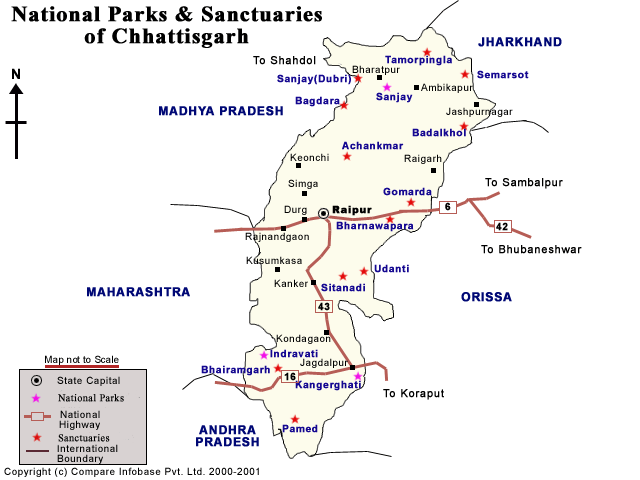
Sources:
Henley Passport Index
- Context: India’s rank has slipped by six places from last year to 90 on the Henley Passport Index.
- Henley Passport Index is the index that lists the world’s most travel-friendly passports.
- It ranks the passports of countries according to the number of destinations their holders can visit without a prior visa.
- The rankings are based on the analysis of data provided by the International Air Transport Association (IATA).
- Japan (for the third consecutive year) and Singapore stood at the top of this year’s list, with their passports holders allowed to travel visa-free to 192 countries.
- South Korea and Germany share the second position.
- Afghanistan, Iraq, Syria, Pakistan, and Yemen are among the least powerful.
- India from the 84th rank last year fell down to the 90th position, with its passport holders allowed to travel visa-free to 58 countries. India shares the rank with Tajikistan and Burkina Faso.

Sources:
New Pamban Bridge- Rameswaram
- Context: The Indian Railways’ 1st Vertical Lift Sea Bridge at Rameswaram- the New Pamban Bridge is expected to be ready soon.
- The New Pamban Bridge is a dual-track state-of-the-art bridge situated in the state of Tamil Nadu which will connect Rameswaram to the mainland in Tamil Nadu.
- The new bridge will help the railways to operate trains at higher speed, carry more weight and increase the volume of traffic between Pamban and Rameswaram.
- It will be developed by Railway Vikas Nigam Limited.
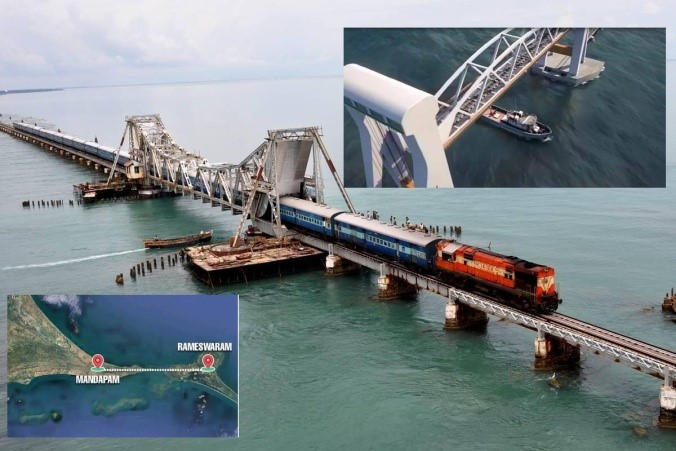
Sources:
The litmus test for Quad’s success: BL
Essence: The editorial focuses on the first-ever in person Quad summit and says that although the countries concluded pacts on geo-politics, technology, climate change, military, etc. it is their economic partnership that will define the future course of Quad. Japan has initiated the process of assisting developing countries to receive covid aid and vaccination. Quad countries have begun the end-to-end supply chain management of critical goods to avoid further dependence shocks.
USA and Japan are amongst the leaders in undersea cable construction and India will get benefited from this partnership, with better broadband penetration, 5G technology and GDP growth. Fellowship program and earth observation satellite, sustainable use of marine resources, green seaports and decarbonizing economy are the manifestations of this new relationship.
Why you should read this article?
- To understand the newer levels of cooperation between quad members.
- To know the threats for India with respect to quad’s future.
Source:
Seeding a data revolution in Indian agriculture: TH
Essence: A consultation paper on the India Digital Ecosystem of Agriculture (IDEA) talks about how data on digital ecosystem of agriculture can fuel the growth in agri-logistics, offtake, and agri-input delivery by 2025. Data-based prediction on agri-business scenarios target the production of alternative proteins, and food cell-based food/ingredients and initiating ocean farming.
The agriculture sector is estimated to receive an additional $35 billion investment because of recent changes in the Farm Acts and digital disruption which will help in doubling farmers’ income. As majority of small and marginal farmers are not technology-savvy, there is a need for capacity building through support systems of FPOs and other farmers associations.
Why should you read this article?
- To understand the impact of digital ecosystem on agriculture.
- To understand the future trends of agriculture because of digital disruptions and changes in the farm acts.
Source:
Use of Technology in bridging gaps
Background
- The pandemic brought into light many of the factors that govern the planning and delivery system in the country.
- Innovations played a major role here, one of which is the use of i-Drone as a medicine delivery medium.
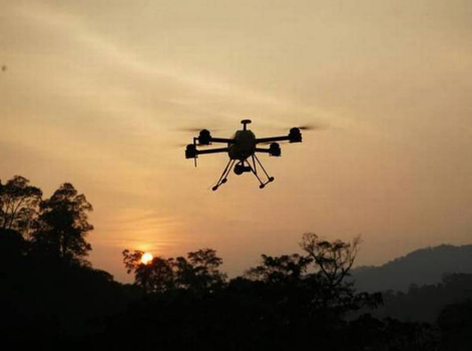
Bridging the gap
- India is a land of vast geographical expanse and difficult terrains, where access to connectivity plays a relatively important role.
- ICMR’s Drone Response and Outreach in North East (i-Drone) delivery model aims at ensuring delivery of life-saving vaccines to these difficult areas.
- This technology can also be used in critical situations. It may prove a game changer in addressing the challenges in health care delivery, particularly health supplies, in difficult areas
- Incorporating such technologies into the national programs would help deliver medical supplies as quickly as possible.
Quote: “Technology makes what was once impossible possible. The design makes it real” – Michael Gagliano
Source:
Share the article
Get Latest Updates on Offers, Event dates, and free Mentorship sessions.

Get in touch with our Expert Academic Counsellors 👋
FAQs
UPSC Daily Current Affairs focuses on learning current events on a daily basis. An aspirant needs to study regular and updated information about current events, news, and relevant topics that are important for UPSC aspirants. It covers national and international affairs, government policies, socio-economic issues, science and technology advancements, and more.
UPSC Daily Current Affairs provides aspirants with a concise and comprehensive overview of the latest happenings and developments across various fields. It helps aspirants stay updated with current affairs and provides them with valuable insights and analysis, which are essential for answering questions in the UPSC examinations. It enhances their knowledge, analytical skills, and ability to connect current affairs with the UPSC syllabus.
UPSC Daily Current Affairs covers a wide range of topics, including politics, economics, science and technology, environment, social issues, governance, international relations, and more. It offers news summaries, in-depth analyses, editorials, opinion pieces, and relevant study materials. It also provides practice questions and quizzes to help aspirants test their understanding of current affairs.
Edukemy's UPSC Daily Current Affairs can be accessed through:
- UPSC Daily Current Affairs can be accessed through Current Affairs tab at the top of the Main Page of Edukemy.
- Edukemy Mobile app: The Daily Current Affairs can also be access through Edukemy Mobile App.
- Social media: Follow Edukemy’s official social media accounts or pages that provide UPSC Daily Current Affairs updates, including Facebook, Twitter, or Telegram channels.



